

Damion Smy
Chinese vacuum cleaner maker teases 1000hp electric supercar
50 Minutes Ago
Range anxiety remains a hurdle to greater adoption of EVs. The EQXX is a new concept from the luxury brand that promises a range of 1000km.

Contributor
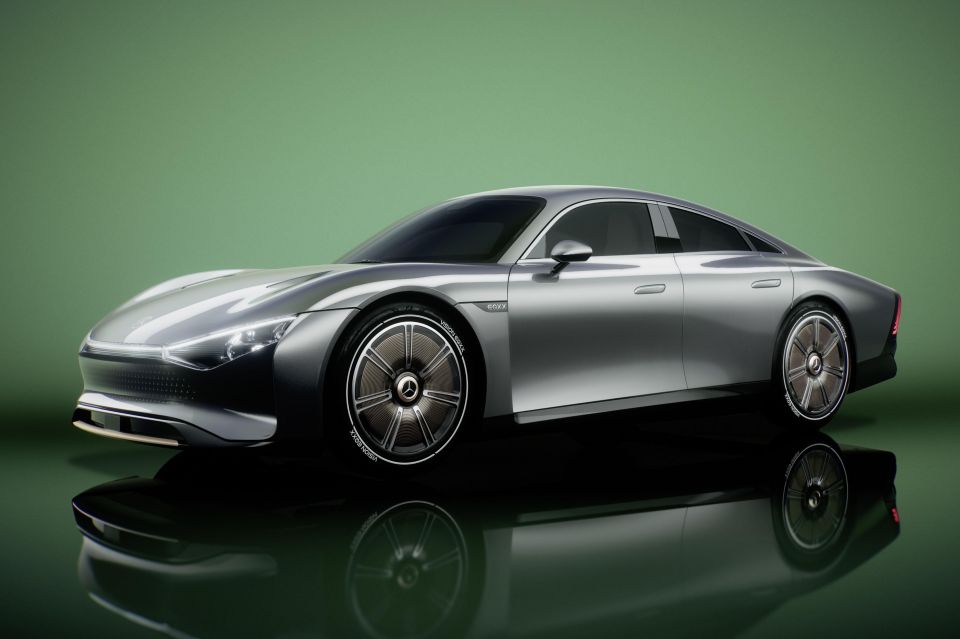

Contributor
One of the key barriers to wider adoption of EVs is range anxiety, the fear that an electric vehicle won’t be able to travel the distance required in a reasonable period of time.
Range anxiety can stem from a vehicle with insufficient efficiency or battery capacity; a lack of available recharging infrastructure; or the time it takes to charge due to the maximum amount of power a vehicle can draw.
The ideal solution to this core problem would therefore be a systematic approach, making available efficient EVs that are capable of being recharged quickly, coupled with an extensive network of fast charging stations.
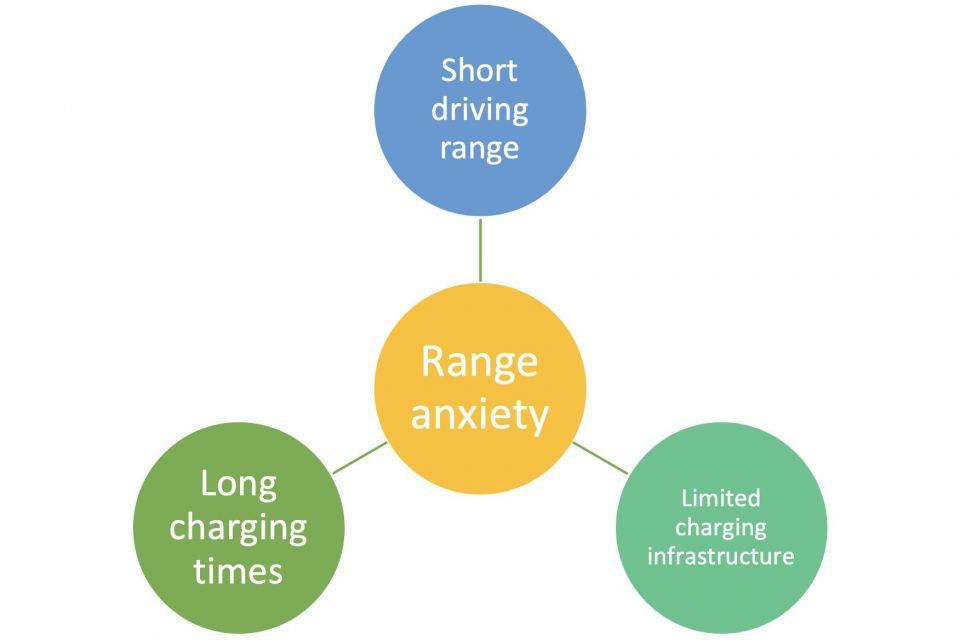
But doing so will require broad government and industry support to start with, and this remains unfeasible in many political climates around the world.
The next best option is to develop ultra-long range electric vehicles that can travel far between charges. Theoretically, this would reduce dependence on a charging network.
Mercedes-Benz has decided to preview this approach with its Vision EQXX concept, an EV that makes use of an incredibly efficient design coupled with a reasonably large battery to offer a claimed real-world range of 1000km – enough to drive from Sydney to Brisbane on a charge.
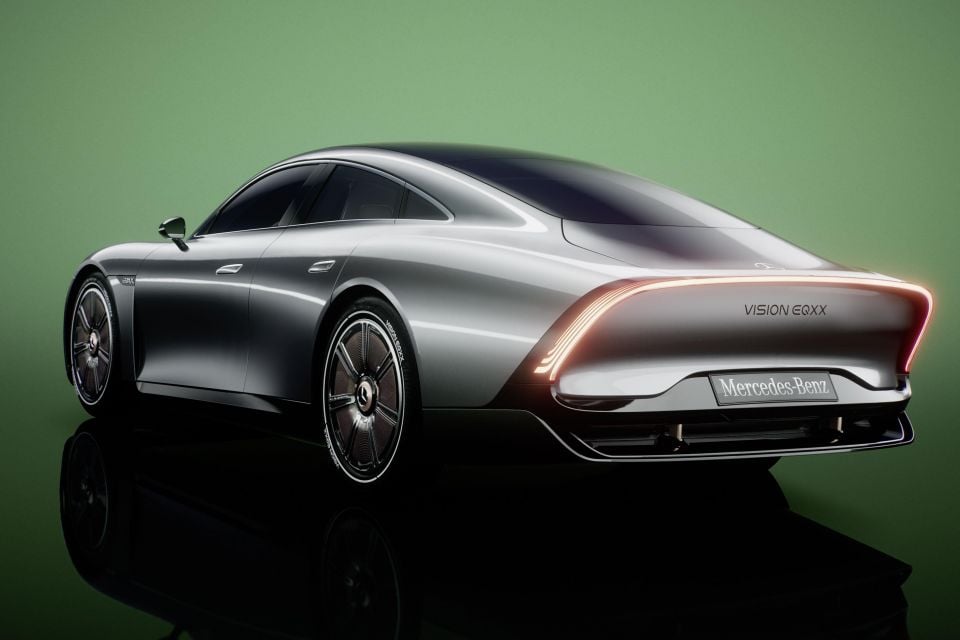
Key to the EQXX’s efficiency is aerodynamics, and this EV is the latest in a long lineage of streamlined concepts the brand has produced over the years. Spiritual predecessors include the C111 (1970) and C112 (1991), as well as 2015’s Concept IAA, and most recently, 2020’s Vision Avtr vehicle designed in conjunction with the filmmakers behind the Avatar movie.
Arguably more so than in these other concepts, Mercedes intends the EQXX to be not just a landmark in the development of its EVs, but also a step change in how it engineers and develops its cars.
To this extent, the marque claims that the ‘XX’ suffix refers to the X-factor of electric mobility as well as the cross-divisional collaborative approach used to engineer the car. ‘EQ’ remains the overarching brand name under which Mercedes EVs are sold.
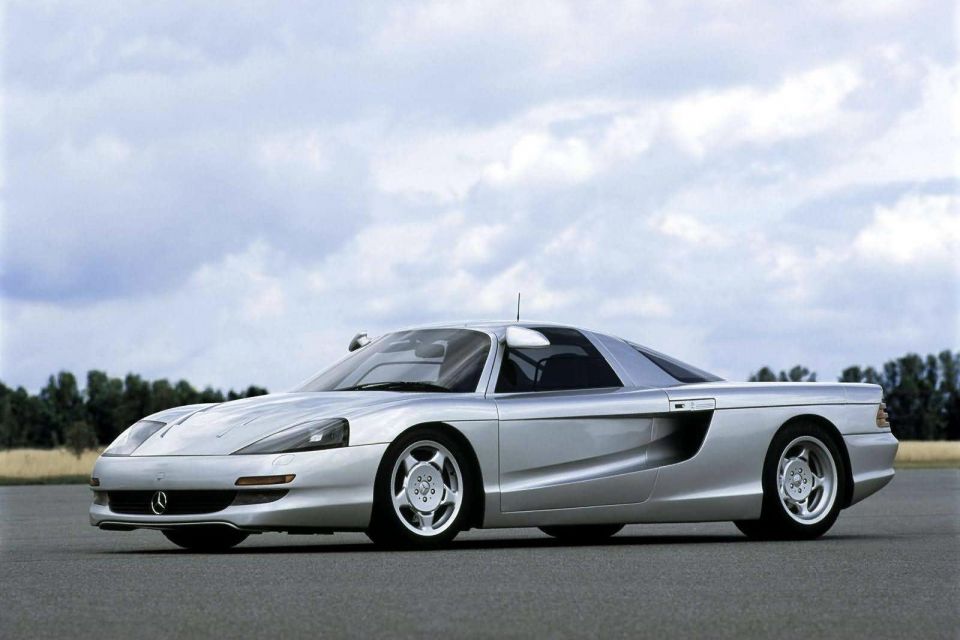
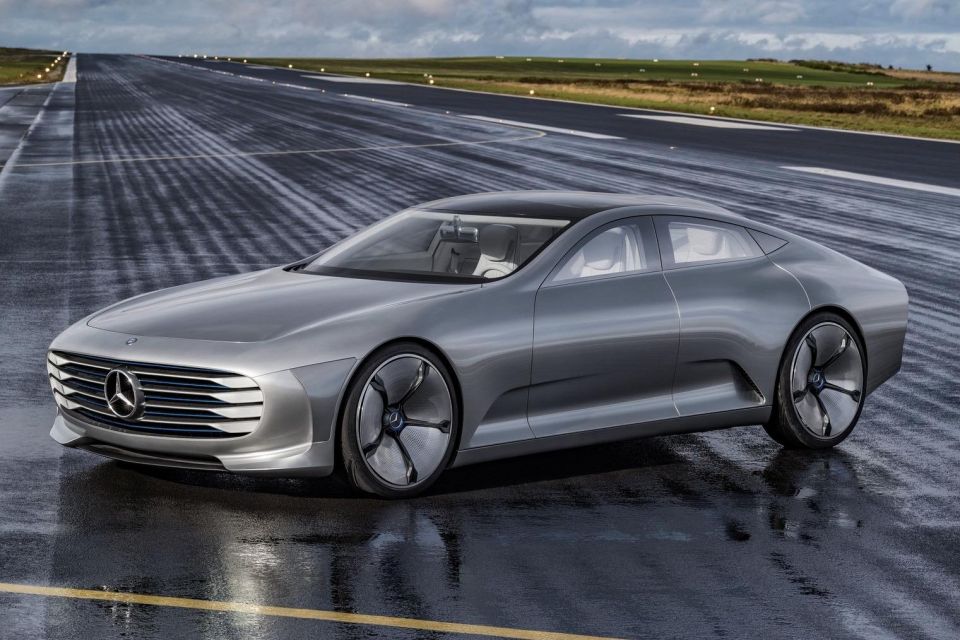
Drag is the most significant detriment to vehicle range when driving at motorway speeds, , with Mercedes-Benz claiming that a typical EV expends almost two-thirds of its battery capacity cutting through the air.
With a teardrop being the most aerodynamic shape in nature, it is from this that the German brand took inspiration. Consequently, the EQXX features a low and steeply curved front end with upwards-sloping front haunches, and an enclosed front ‘grille.’ These elements all work together to give the EQXX a small frontal area.
The side profile continues the teardrop shape. One of the most notable features are the air curtains that allow air to flow smoothly from the front of the car, over the wheels and out through the sides. This design element works in conjunction with the enclosed wheels to further minimise drag.

This profile also provides the base for muscular rear haunches that the EQXX designers have cleverly used to disguise the fact that the EQXX has a rear track 50mm narrower than the front.
Key to the aerodynamic efficiency of this design is an extendable rear diffuser, which deploys to further elongate and streamline the car at higher speeds, but is also able to operate in all weather conditions and instantly retract in the event of a rear-end collision.
All of this has allowed Mercedes to achieve a drag coefficient of just 0.17. Whilst the EQXX is not currently in production, this compares favourably not only to its stablemate, the recently launched EQS (0.20 Cd), but also other benchmark EVs such as the latest iteration of the Tesla Model S (0.21 Cd).
Perhaps the only production car in recent memory with a comparable drag coefficient would be the 2015 Volkswagen XL1, which made use of a similar teardrop shape to obtain a 0.19 Cd value.
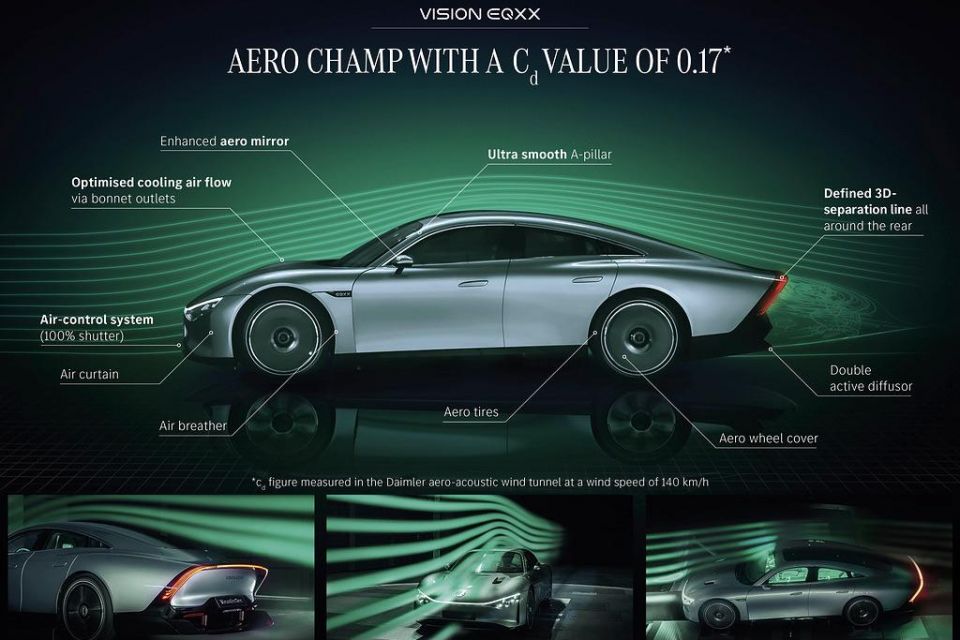
Reducing mass means less material for an EV’s powertrain to push around, and this can also be an important contributor to maximising a car’s efficiency. Many car-makers today take a more superficial approach to reducing weight, by simply replacing materials with lighter substitutes wherever possible.
A more thorough process is to substantively remove material from various parts of a car in a manner that doesn’t affect their structural integrity, crashworthiness or load bearing ability.
Whilst the latter is not new, with even Mazda drilling holes in the MX-5’s chassis to reduce weight where possible as part of its ‘Gram Strategy’, the development of the EQXX takes this several steps further, with engineers using new computational approaches to remove as much material as possible.

Known as ‘bionic simulation’, Mercedes engineers claim to have borrowed polygonal modelling techniques from the 3D animation and video gaming industries to model parts and virtually identify stresses and load paths for a particular component.
The end result is that many parts of the EQXX take on an organic, web-like structure as the maximum amount of material is removed without compromising stiffness.
This approach is used in many parts of the car, including the suspension damping domes, and the bracket to house the windscreen wipers. However, the most significant use of this technology is the one-piece casting which forms the rear floor of the car.
Here, the gaps that are created in these web like structures are filled with a light, sustainable plastic substitute known as ‘UBQ’ which acts as a sound deadening material, further improving refinement without additional weight.
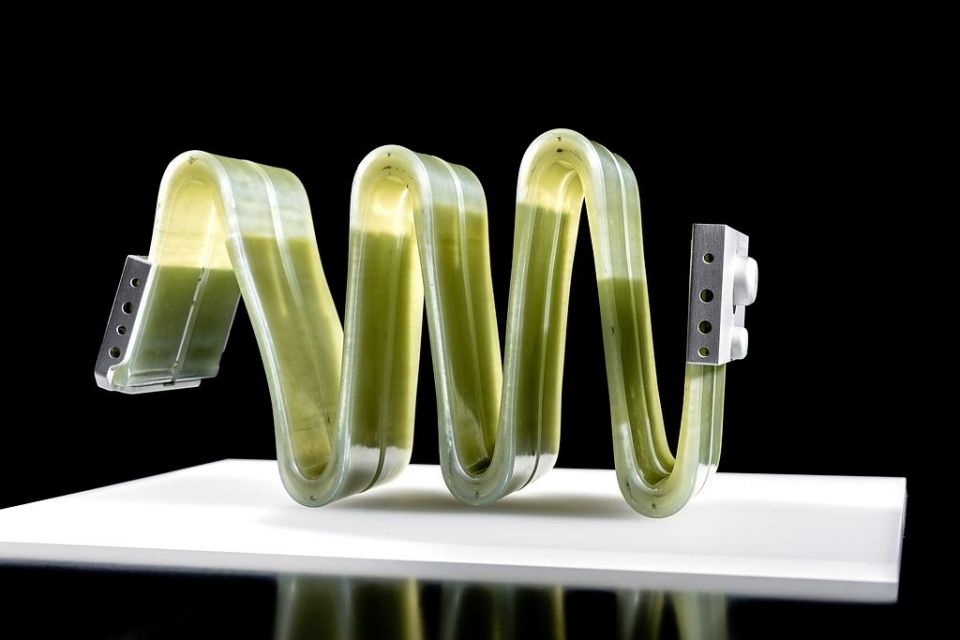
Other sustainable and/or lightweight materials used in the body of the EQXX include aluminium brake discs, doors made from a hybrid of CFRP and GFRP (carbon and glass fibre reinforced plastic respectively), as well as steel produced using low CO2 methods. Interestingly, the springs for the suspension are also made from GFRP rather than metal.
Regardless of how aerodynamic an EV’s design is, and how light the parts used to build it are, battery capacity remains a key factor in determining the car’s overall driving range.
With the EQXX, Mercedes claims to have fitted a battery with a 100kWh capacity (similar to that of the EQS), but with half its physical size and with a 30 per cent weight reduction, arising from what the German brand claims are advances in anode chemistry, and providing extra space for cells to be packed more tightly by integrating electronic control components for the battery into a distinct ‘OneBox.’
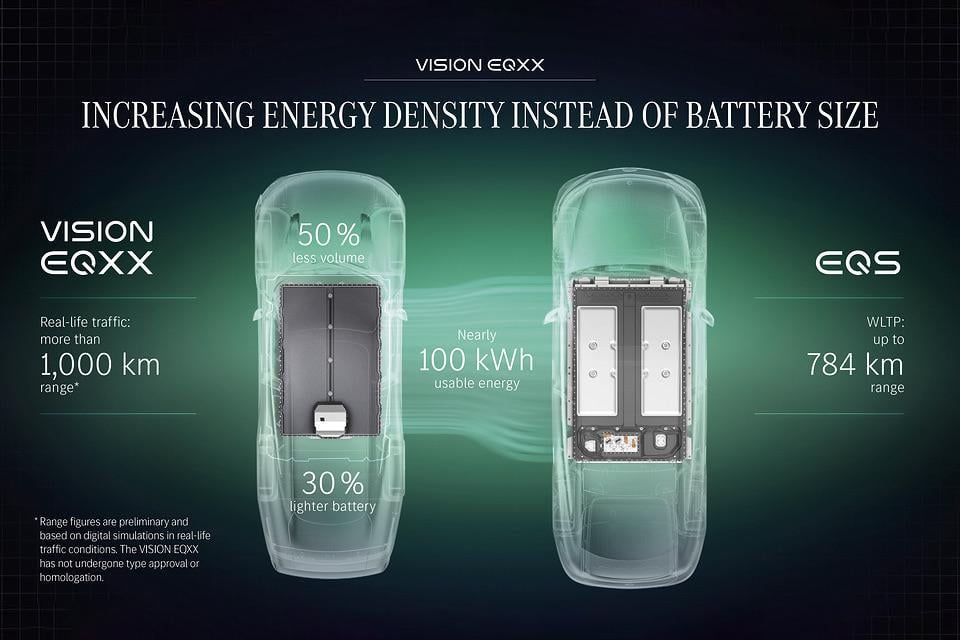
The use of this OneBox and the advances in cell chemistry enable Mercedes to dispense with a liquid cooling system for the battery altogether (currently the norm for most EVs), and instead use a far simpler (and lighter) atmospheric air cooling system.
This air cooling system consists of a plate installed at the bottom of the vehicle. As the car drives, air flows through the vehicle underbody, cooling this plate, which in turn cools the battery pack.
Under warmer conditions or more aggressive driving, ducts in the car’s front bumper also open, sending a greater volume of air to cool the battery and associated drivetrain components. The system also incorporates a dedicated fan to cool the battery as required when the car is stationary.
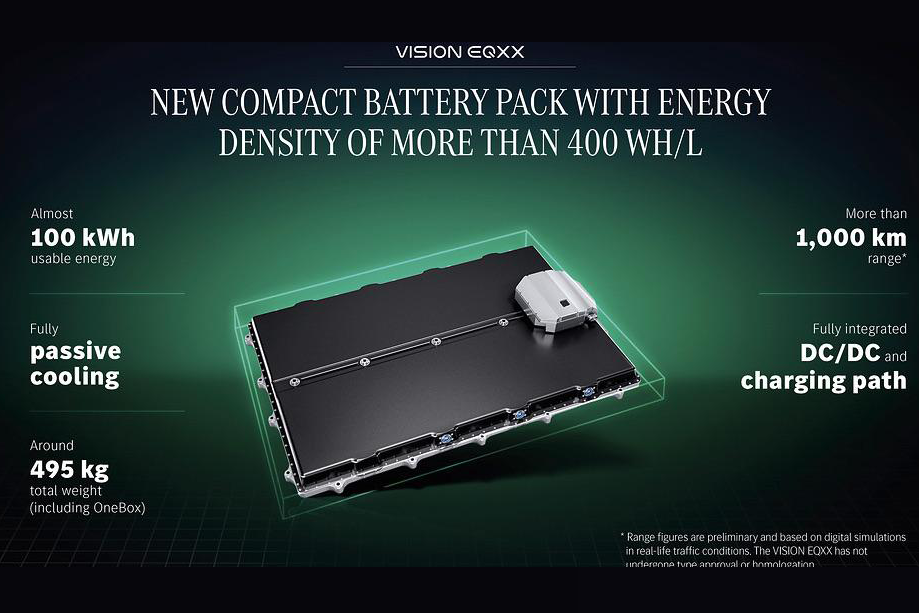
Conventional thinking, as evident in models such as the standard Nissan Leaf, is that the absence of a liquid cooling system also means that an EV cannot have a fast charging capability. However, Mercedes claims that future production cars using the EQXX’s battery technology will be able to quickly top up as much as 300km in 15 minutes.
This is further supported by the EQXX’s use of an experimental 900V electrical architecture.
Supplementary solar cells on the roof are able to power ancillary systems such as the air-conditioning, and in the right weather can also add up to 25km of driving range.
These systems power a rear mounted 150kW motor (driving the rear wheels), that the brand has confirmed offers a 0-100 km/h acceleration time of approximately 7.0 seconds and a top speed of around 140 km/h.
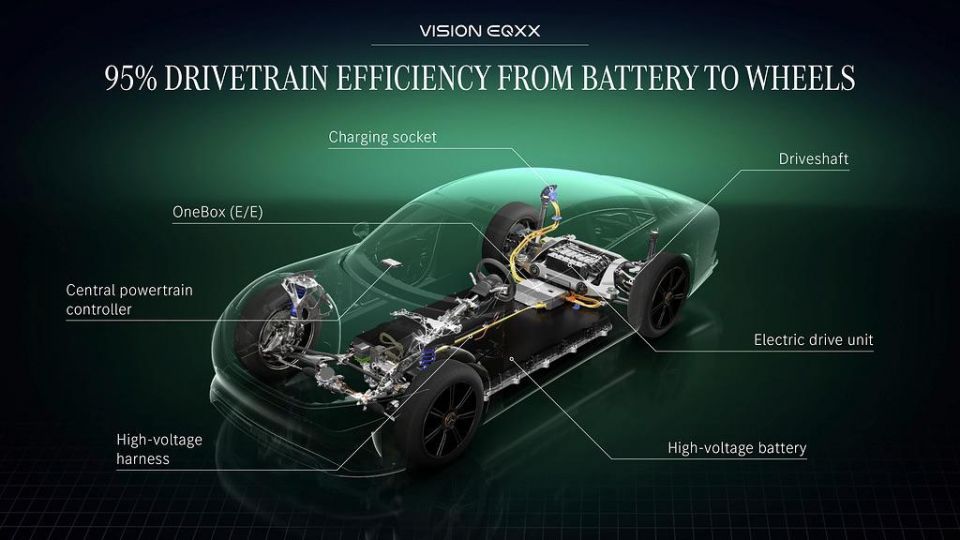
Overall, Mercedes claims that the EQXX achieves an energy consumption of less than 9.7 kWh/100 km. For comparison, a Tesla Model 3 Long Range is claimed to consume 16 kWh/100 km (WLTP), whilst Mercedes’ most efficient EV on sale, the EQS 450+, claims a consumption of between 15.4-20.7 kWh/100 km on the same WLTP cycle.
The company contends that the EQXX is efficient enough such that 95 per cent of the energy from the battery actually reaches the wheels, compared to just 30 per cent for a traditional combustion car.
The dominant feature of the interior is of course the infotainment display. A progression from the current tri-screen ‘Hyperscreen’ in the EQS and EQE, the screen in the EQXX is arguably the final evolution in Mercedes’ horizontally oriented infotainment design, a concept which was first implemented with the dual-screen W222 S-Class in 2013.
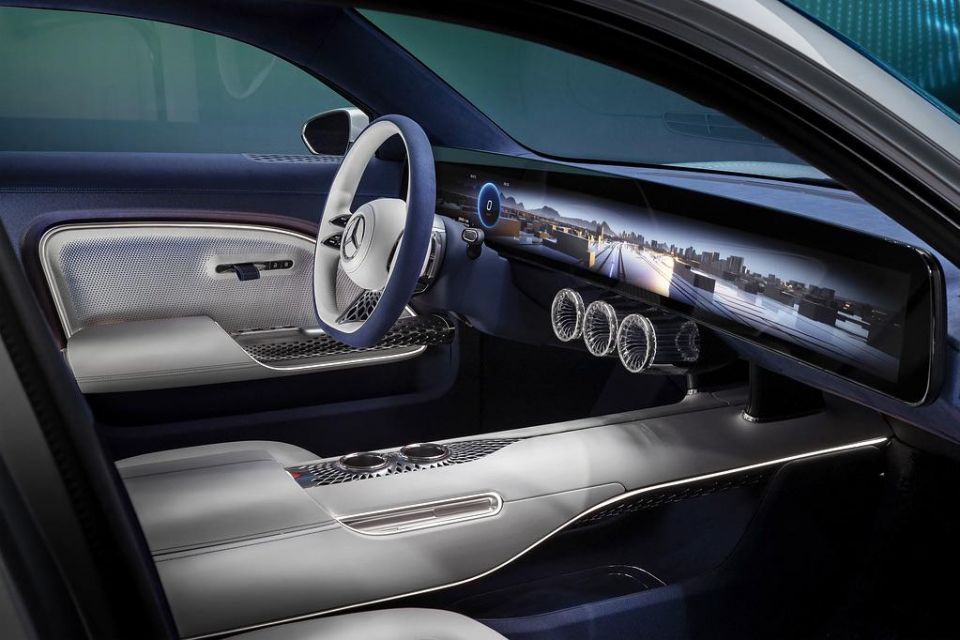
Stretching the width of the interior, the display uses an ultra-wide aspect ratio to achieve a mammoth size of 47.5 inches at an 8K resolution, all powered my mini-LEDs. These are split into some 3000 zones, reducing energy consumption of the display by turning off if they are not required to display anything.
A new version of Mercedes’ MBUX operating system and ‘Hey Mercedes’ voice assistant take advantage of this display to offer features such as an interactive ‘efficiency assistant’ to tell the driver the impact that variables such as wind speed (via a sensor mounted in the front bumper), topography and driving style are having on the car’s range.
The practice of adopting sustainable materials from the exterior also continues inside, with the EQXX adopting an all-vegan interior. Materials such as ‘Mylo’ and ‘Deserttex’ mushroom and cactus based leathers offer a sustainable alternative to their cow-based counterparts, whilst the floor mats are made from bamboo fibre.
The EQXX is designed to comfortably seat 4 people.
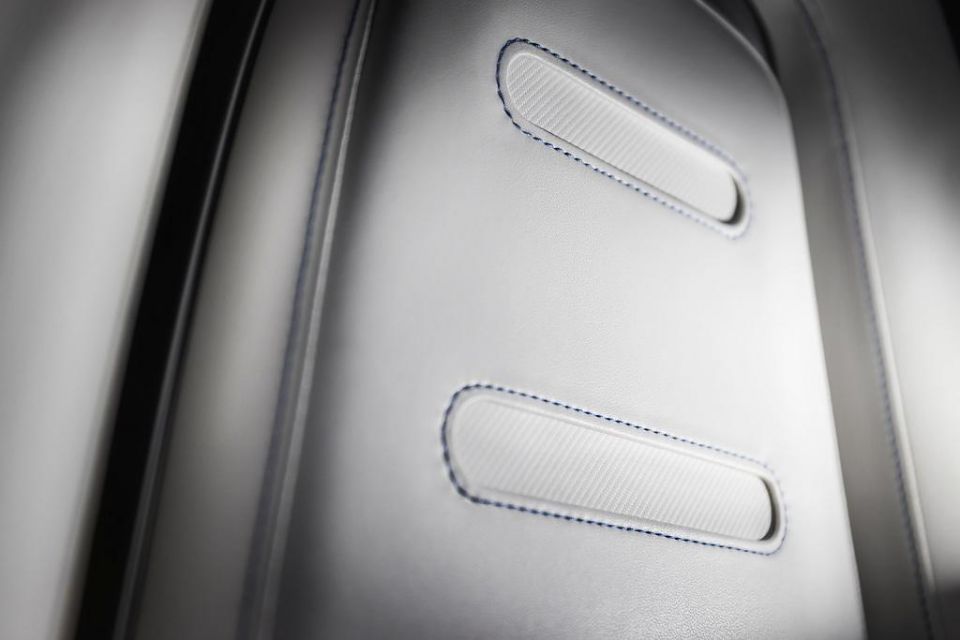
Whilst the ‘Vision’ moniker technically means the EQXX is a concept at this stage, Mercedes has developed the car with production ready technology, materials and design, and claims that road-going prototypes will undertake testing later in 2022.
If the German brand determines that demand is present, it is easy to see the EQXX being launched as a standalone model in the near future, similar to how other Mercedes EVs such as the EQS were also previewed by Vision concepts. Nevertheless, at present, no firm decision has been announced as to whether the EQXX will be mass-produced.
If the EQXX itself does not make production, it is likely that elements of it, such as the compact battery and efficient powertrain design, will feature on the brand’s upcoming MMA (Mercedes Modular Architecture) platform that could be used as a basis for future EV versions of compact models such as the A and CLA-Class vehicles.
Mercedes has hinted that the first models to use the EQXX powertrain design will be on sale by 2024.
Where expert car reviews meet expert car buying – CarExpert gives you trusted advice, personalised service and real savings on your next new car.


Damion Smy
50 Minutes Ago


Matt Robinson
3 Hours Ago


Damion Smy
3 Hours Ago


Damion Smy
18 Hours Ago


Damion Smy
19 Hours Ago


Damion Smy
21 Hours Ago